Roman life
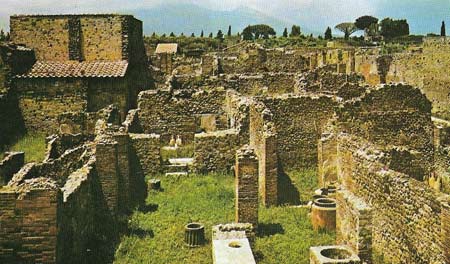
Figure 1. The ruins of Pompeii were preserved beneath ashes after the eruption, described by the Pliny the Younger, of Vesuvius in AD 79. Excavations revealed a unique record of Roman daily life.
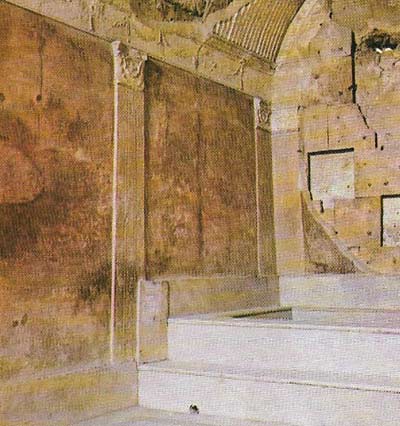
Figure 2. Every upper-class Roman visited baths – like the Stabian baths of Pompeii – daily with his oil flask, towels and other toiletries.
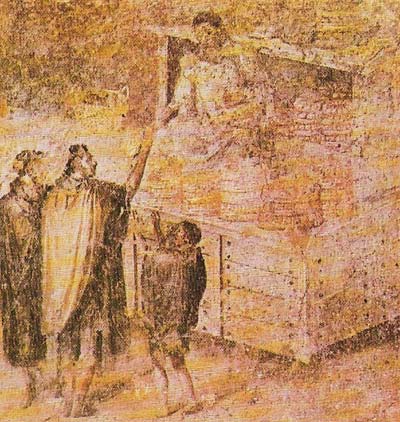
Figure 3. All baking was apparently done at home until the 2nd century BC. The exhausting work of turning the grinding mills was for slaves helped by donkeys. A bakery like this one was uncovered at Pompeii. The oven in it contained a large number of loaves, still intact and weighing about 900 g (2 lb) each.
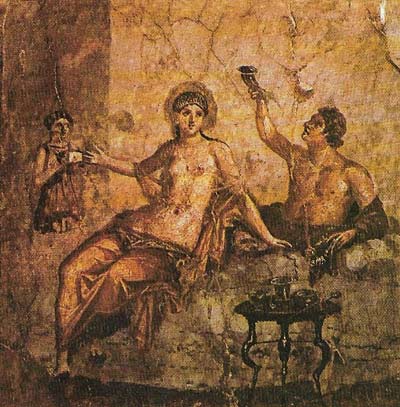
Figure 4. The life of Herculaneum, a residential town between Naples and Pompeii, was revealed only after arduous excavations; the eruption of Vesuvius in AD 79 covered it with a thick layer of mud. However, the mud preserved much of the original town. Here a mosaic shows a man and woman served by a slave.
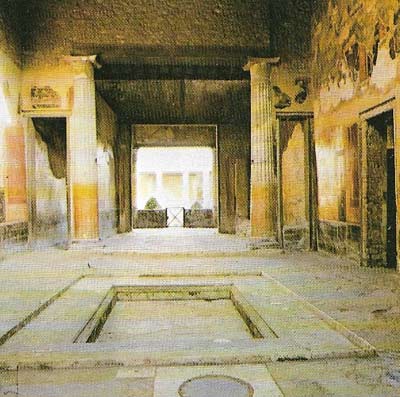
Figure 5. The house of Menander at Pompeii was more a country villa than a town house. The main reception room in the center of Roman villas was the atrium, which was luxuriously furnished with tiles, marbles and fresco paintings. In the middle of the floor was the impluvium, a pool into which rainwater fell.
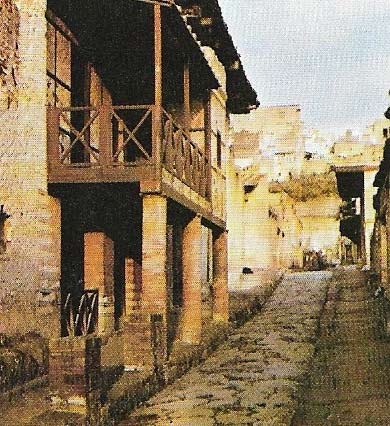
Figure 6. A number of houses in Herculaneum have kept their second stories. The house shown here, the Casa del Graticcio, still contains its original beds in two small rooms in the upper floor, together with other furnishings. The house was clearly divided into many small apartments; large blocks of flats, often shoddily built, were a common feature of towns and cities in imperial times.
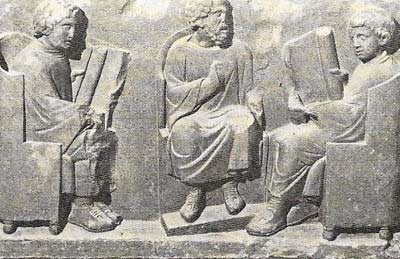
Figure 7. This sandstone relief from Gaul shows a school scene: a teacher is seated between his two pupils who are opening their scrolls for the lesson. Discipline was severe and corporal punishment was frequent. Sons of wealthy families were escorted to and from school by a household slave or freedman known as a paedagogus, who was sometimes also a tutor. The children wore warm cloaks and thick shoes to protect them against the rigors of the northern climate.
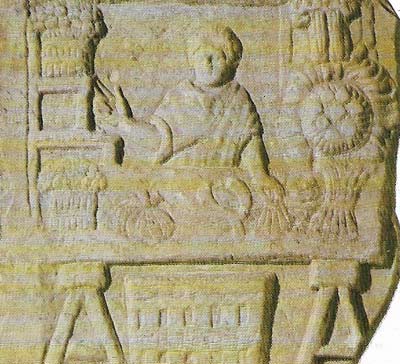
Figure 8. Roman shopkeepers worked long hours. Their produce was brought into the city at night to avoid the traffic congestion of the day. This relief of a greengrocer's shop in Ostia includes illustrations of various vegetables.
In Rome, as in all societies, the sort of life the people led depended very much on the social class to which they belonged. In general the class system was based on wealth rather than birth, although often the two criteria merged. The highest class was composed of the members of the Senate, who for most of the republican period were nobiles, or nobles. The second class, the equites, or knights, derived most of their considerable wealth from business activities such as banking. Members of the upper classes wielded authority not only over their own families but as patrons over a number of semi-dependents known as clients. The third class of full citizens, the plebeians, after a long struggle won complete political equality. Once they were permitted to hold the magistracies they could move into the highest social class, because former magistrates were automatically ex officio members of the Senate.
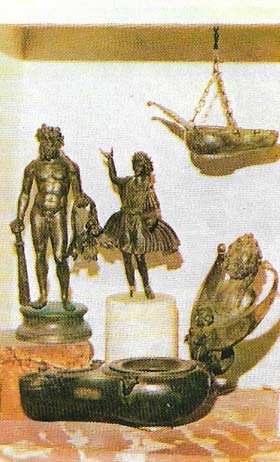 |
>
| Many Roman houses had a lararium, a private chapel to lares, spirits of the hearth to whom offerings of food and flowers were made. Closely related was the worship of the penates, the guardians of the store cupboard. |
The Roman slaves
At the base of the social pyramid were the slaves. The settled order of Roman life depended on the toil of slaves, who might well make up half the population of a town. A slave was under the absolute control of his master during the period of the republic.
During the imperial period the treatment of slaves improved somewhat, some protection being given to them against savage masters. More important, slaves were able to look forward more confidently to eventual manumission, or freeing. Many freedmen became extremely wealthy and influential and their sons became full Roman citizens. The life of slaves varied greatly, particularly between town and country. In the country they were likely to work long hours carrying out arduous tasks on latifundia, or estates, and on farms or in mills, while in the towns they might be comparatively well treated.
Careers and education
The son of a rich upper-class family might well have political ambitions. But he would generally start by training as a lawyer and become either an advocate in the courts or a legal consultant. Other professions were not thought really respectable. For much of the republic most doctors, architects and dentists were slaves or freedmen. Writers could expect to make little money from their work unless they could rely on some wealthy patron to encourage them, as Maecenas encouraged Virgil. But most Romans were far from rich or influential. Although manual labor was thought unworthy of a citizen, they struggled to make a living as bakers, shopkeepers and craftsmen of all kinds, generally employing one or two slaves to assist them. Some young men might enter the army which, after the reforms of Marius the consul at the end of the second century BC, was a professional force manned by voluntary recruits who received a small land-holding on retirement.
Most children of Roman citizens received some formal education although only boys could expect to go beyond the primary stage. Under the empire some education was provided free for poor students but generally parent paid a small fee. Between the ages of 7 and 12, children received a somewhat rough-and-ready grounding in reading, writing and arithmetic from a litterator. They could then, if they chose, move on to a grammaticus, under whom they studied Greek and Latin literature and received an introduction to geometry and advanced arithmetic. The third stage in schooling was study under a rhetor, or orator, to learn the principles of effective public speaking, an ability that was important for success in politics and in the law courts. Finally the more ambitious and wealthy students might progress to the equivalent of university level. They studied either law, under an established lawyer or at a law school, or Greek oratory and philosophy, which involved attendance at one of the great centers of Greek learning, the most popular of which were at Athens and Rhodes.
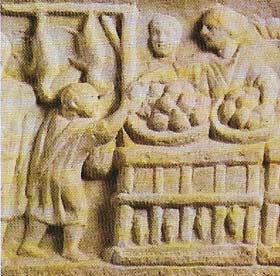 |
>
| This poulterer's shop was located in Ostia, once the port of Rome. Cicero regarded shopkeeping as near the bottom of the list of employments suitable for people of taste – but better than dancing. |
Spectator and participatory sports
Sports among the Romans were in two categories, spectator sports and participatory sports. In the first group were the public spectacles staged in the amphitheaters, the "bread and circuses" of which the satirist Juvenal contemptuously wrote. These included musical performances, readings of verse and theatrical performances, which were sometimes staged with extraordinary lavishness. What really drew the crowds were gladiatorial contests to the death between men or between men and beasts, and also the thrilling and dangerous chariot races, which might be run between individual charioteers or between teams of chariots.
The Romans did not place the same emphasis on physical exercise as the Greeks, but many young men of the upper classes were enthusiastic riders and hunters. Many also enjoyed boxing and wrestling and there were several ball games, such as harpastum and trigon, the details of which are rather obscure. Children played many of the games that children have played through the ages – hoops, tops, pitch and toss, marbles, hide-and-seek and leapfrog. In general the adult Roman preferred gambling games above all other leisure activities, except perhaps drinking (there were about 120 taverns in Pompeii). Throwing dice, tesserae, and knucklestones, tali, were the favorite methods of gaming. Dice, which like modern dice carried numbers from one to six, were also used to determine the player's moves in various board games.
